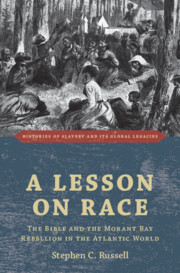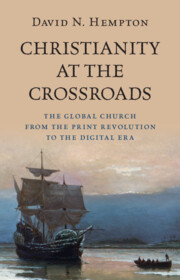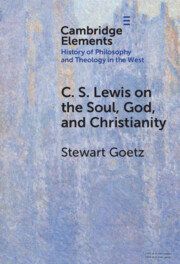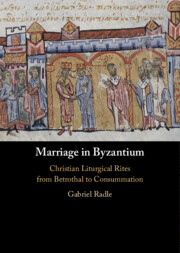Refine search
Actions for selected content:
612 results
Chapter 11 - Religion
- from Part II - Themes and Issues
-
-
- Book:
- The Cambridge Companion to Modernist Theatre
- Published online:
- 28 August 2025
- Print publication:
- 11 September 2025, pp 198-216
-
- Chapter
- Export citation
2 - Epistemologies of the Secret Elsewhere
-
- Book:
- The Epistemology of the Secret
- Published online:
- 23 July 2025
- Print publication:
- 31 August 2025, pp 40-64
-
- Chapter
- Export citation
A late-antique catacomb in Sirte: a reassessment of the evidence a century after its excavation
-
- Journal:
- Libyan Studies , First View
- Published online by Cambridge University Press:
- 27 August 2025, pp. 1-7
-
- Article
-
- You have access
- Open access
- HTML
- Export citation
Chapter 4 - Compassion
- from Part II - Virtues of Direct Caring
-
- Book:
- Attention to Virtues
- Published online:
- 25 July 2025
- Print publication:
- 14 August 2025, pp 65-84
-
- Chapter
- Export citation
Chapter 9 - Living in Accordance with Nature
- from Part II - Virtue and Eudaimonia
-
-
- Book:
- Kant and Stoic Ethics
- Published online:
- 18 July 2025
- Print publication:
- 07 August 2025, pp 151-170
-
- Chapter
- Export citation
1 - Towards a Theory of Transnational Religious Change
-
- Book:
- Christianity at the Crossroads
- Published online:
- 19 May 2025
- Print publication:
- 31 July 2025, pp 13-44
-
- Chapter
- Export citation
Introduction
-
- Book:
- Christianity at the Crossroads
- Published online:
- 19 May 2025
- Print publication:
- 31 July 2025, pp 1-12
-
- Chapter
- Export citation
Chapter 14 - Religion
- from Part II - Social Contexts
-
-
- Book:
- Sean O'Casey in Context
- Published online:
- 23 June 2025
- Print publication:
- 10 July 2025, pp 150-158
-
- Chapter
- Export citation
5 - The Imperial Examinations and Confucianism
-
- Book:
- Institutional Genes
- Published online:
- 03 June 2025
- Print publication:
- 26 June 2025, pp 163-201
-
- Chapter
- Export citation
Soul Force and Social Transformation: Martin Luther King Jr. beyond Liberalism and Critical Race Theory
-
- Journal:
- Journal of Law and Religion , First View
- Published online by Cambridge University Press:
- 17 June 2025, pp. 1-27
-
- Article
-
- You have access
- Open access
- HTML
- Export citation
Epilogue: Forging Exile
- from Part II - Becoming the Exile
-
- Book:
- Medieval Responses to Ovid's Exile
- Published online:
- 27 May 2025
- Print publication:
- 12 June 2025, pp 210-221
-
- Chapter
- Export citation
Introduction
-
- Book:
- Medieval Responses to Ovid's Exile
- Published online:
- 27 May 2025
- Print publication:
- 12 June 2025, pp 1-26
-
- Chapter
- Export citation
Chapter 3 - Resurrecting Ovid
- from Part I - Responding to Exile
-
- Book:
- Medieval Responses to Ovid's Exile
- Published online:
- 27 May 2025
- Print publication:
- 12 June 2025, pp 90-122
-
- Chapter
- Export citation
10 - Antisemitism in Interwar Europe
-
-
- Book:
- The Cambridge History of the Holocaust
- Published online:
- 16 May 2025
- Print publication:
- 12 June 2025, pp 198-219
-
- Chapter
- Export citation
6 - “Produce Your Cause”: The Bible
-
- Book:
- A Lesson on Race
- Published online:
- 22 May 2025
- Print publication:
- 05 June 2025, pp 106-122
-
- Chapter
- Export citation

A Lesson on Race
- The Bible and the Morant Bay Rebellion in the Atlantic World
-
- Published online:
- 22 May 2025
- Print publication:
- 05 June 2025

Christianity at the Crossroads
- The Global Church from the Print Revolution to the Digital Era
-
- Published online:
- 19 May 2025
- Print publication:
- 31 July 2025
Epilogue
- from Part II - Aelius Aristides’ Lyric
-
- Book:
- Aelius Aristides and the Poetics of Lyric in Imperial Greek Culture
- Published online:
- 01 May 2025
- Print publication:
- 15 May 2025, pp 270-275
-
- Chapter
- Export citation

C. S. Lewis on the Soul, God, and Christianity
-
- Published online:
- 12 May 2025
- Print publication:
- 05 June 2025
-
- Element
- Export citation

Marriage in Byzantium
- Christian Liturgical Rites from Betrothal to Consummation
-
- Published online:
- 01 May 2025
- Print publication:
- 23 January 2025
